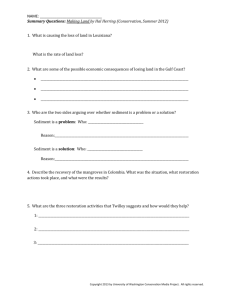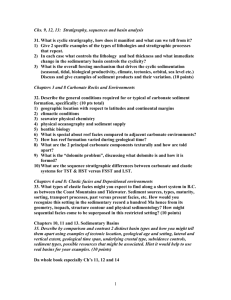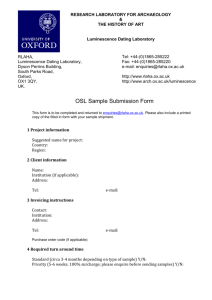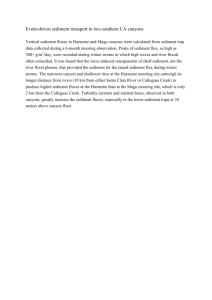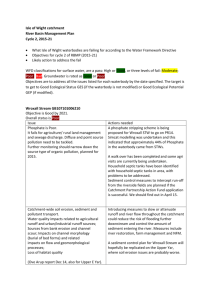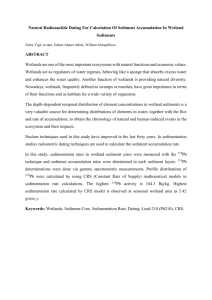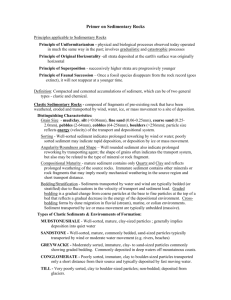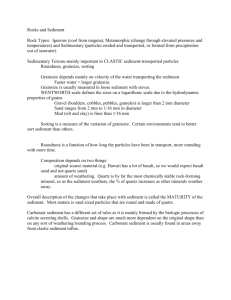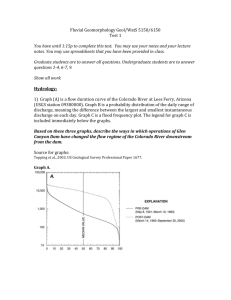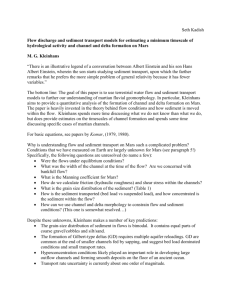A Source to Sink Perspective of the Waipaoa River Margin A
advertisement
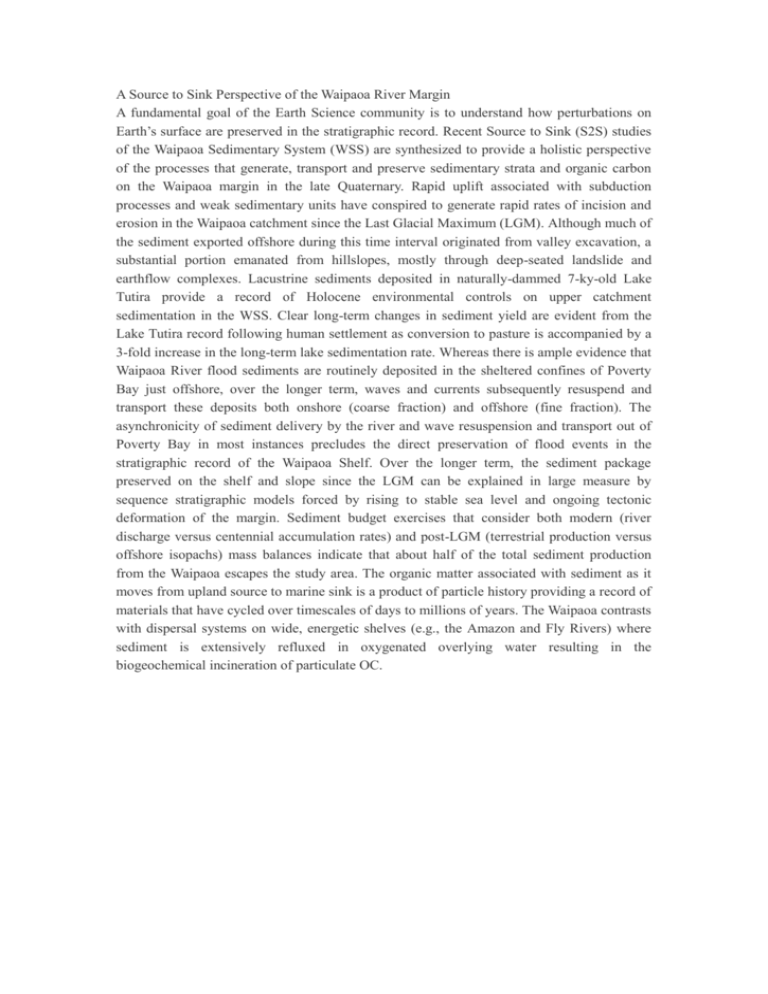
A Source to Sink Perspective of the Waipaoa River Margin A fundamental goal of the Earth Science community is to understand how perturbations on Earth’s surface are preserved in the stratigraphic record. Recent Source to Sink (S2S) studies of the Waipaoa Sedimentary System (WSS) are synthesized to provide a holistic perspective of the processes that generate, transport and preserve sedimentary strata and organic carbon on the Waipaoa margin in the late Quaternary. Rapid uplift associated with subduction processes and weak sedimentary units have conspired to generate rapid rates of incision and erosion in the Waipaoa catchment since the Last Glacial Maximum (LGM). Although much of the sediment exported offshore during this time interval originated from valley excavation, a substantial portion emanated from hillslopes, mostly through deep-seated landslide and earthflow complexes. Lacustrine sediments deposited in naturally-dammed 7-ky-old Lake Tutira provide a record of Holocene environmental controls on upper catchment sedimentation in the WSS. Clear long-term changes in sediment yield are evident from the Lake Tutira record following human settlement as conversion to pasture is accompanied by a 3-fold increase in the long-term lake sedimentation rate. Whereas there is ample evidence that Waipaoa River flood sediments are routinely deposited in the sheltered confines of Poverty Bay just offshore, over the longer term, waves and currents subsequently resuspend and transport these deposits both onshore (coarse fraction) and offshore (fine fraction). The asynchronicity of sediment delivery by the river and wave resuspension and transport out of Poverty Bay in most instances precludes the direct preservation of flood events in the stratigraphic record of the Waipaoa Shelf. Over the longer term, the sediment package preserved on the shelf and slope since the LGM can be explained in large measure by sequence stratigraphic models forced by rising to stable sea level and ongoing tectonic deformation of the margin. Sediment budget exercises that consider both modern (river discharge versus centennial accumulation rates) and post-LGM (terrestrial production versus offshore isopachs) mass balances indicate that about half of the total sediment production from the Waipaoa escapes the study area. The organic matter associated with sediment as it moves from upland source to marine sink is a product of particle history providing a record of materials that have cycled over timescales of days to millions of years. The Waipaoa contrasts with dispersal systems on wide, energetic shelves (e.g., the Amazon and Fly Rivers) where sediment is extensively refluxed in oxygenated overlying water resulting in the biogeochemical incineration of particulate OC.






